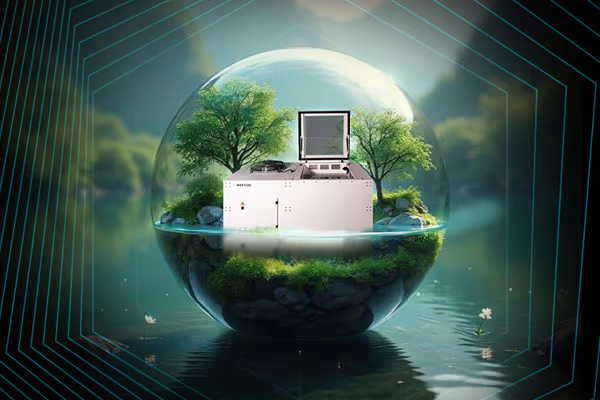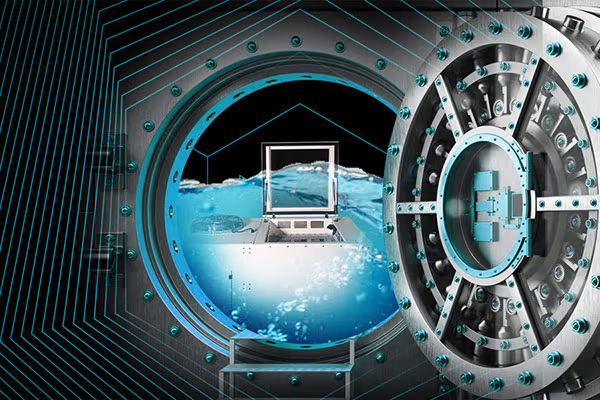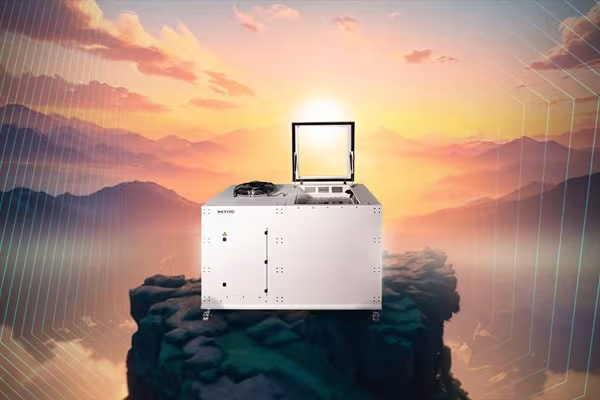
From Megawatts to Milliliters: Liquid Cooling Innovations Reshaping Data Center Energy Efficiency
Data centers today are the backbone of the digital economy, powering everything from cloud computing and AI to streaming and ecommerce. However, these facilities consume massive amounts of energy - often measured in megawatts - primarily due to powering servers and keeping them cool. As demand for computing grows, so does the imperative to improve energy efficiency to reduce costs and environmental impact. Liquid cooling, particularly immersion cooling, is at the forefront of this transformation. Innovative technologies have shifted cooling paradigms from bulky, energy-intensive air conditioning systems measured in megawatts to precise, fluid-based solutions working with milliliters of specialized dielectric fluids. These innovations are not just improving cooling efficiency; they’re redefining what’s possible in data center design, operation, and sustainability.
In this article, we’ll explore the latest liquid cooling innovations that are reshaping energy efficiency in data centers and how they’re enabling a new era of high-performance, eco-friendly infrastructure.
1. The Energy Challenge in Modern Data Centers
Data centers are among the largest consumers of electricity worldwide. Industry estimates suggest that data centers account for roughly 1% of global electricity demand, with projections pointing to continued growth as digital services expand. A significant portion of this energy is used not to power computing itself but to cool servers and maintain optimal operating temperatures. Traditional air cooling systems rely on large HVAC installations, fans, and chillers - all of which consume substantial electricity. For example, a typical data center’s Power Usage Effectiveness (PUE) - the ratio of total facility energy to IT equipment energy - hovers around 1.5 to 2.0, meaning up to half or more of the energy goes just to cooling and infrastructure overhead.
This inefficiency contributes to higher operational costs and increased carbon emissions, pressing the industry to innovate new cooling methods that dramatically improve energy use without compromising performance or reliability.
2. Why Liquid Cooling Is More Efficient
Liquid cooling offers a fundamentally different approach by leveraging the superior thermal properties of liquids compared to air. Water, or specially designed dielectric fluids, can absorb and transfer heat hundreds of times more efficiently than air, making liquid cooling inherently more energy-efficient.
There are two primary liquid cooling approaches gaining traction:
- Direct-to-chip cooling: Liquid coolant is delivered via cold plates attached directly to CPUs, GPUs, and other hot components. This targeted cooling reduces the need for large air handlers.
- Immersion cooling: Servers are submerged in dielectric fluids that transfer heat away from all components simultaneously, eliminating fans and reducing cooling infrastructure.
Both approaches drastically reduce the energy needed to keep equipment cool. Immersion cooling, in particular, can cut cooling energy consumption by up to 40% or more, enabling overall data center PUE values below 1.2 in some cases - a significant improvement over traditional setups.
3. Innovations Driving Liquid Cooling Efficiency
Recent technological advancements have propelled liquid cooling into the spotlight:
- Advanced Dielectric Fluids: New fluid chemistries offer higher thermal conductivity, better chemical stability, and environmental safety. These fluids efficiently absorb and dissipate heat while protecting delicate electronics from damage.
- Two-Phase Immersion Cooling: This method uses a fluid that boils at low temperatures, absorbing heat as it evaporates. The vapor is then condensed and recirculated, enabling highly efficient heat transfer with minimal energy input for pumping or fans.
- Modular and Scalable Systems: Immersion cooling tanks and direct-to-chip solutions are increasingly designed as modular units, allowing easy scaling and deployment closer to end-users or edge locations, reducing latency and improving energy footprint.
- Integration with Renewable Energy and Waste Heat Recovery: Liquid cooling systems can be integrated with heat exchangers to capture waste heat and repurpose it for heating buildings or powering absorption chillers, maximizing overall site energy efficiency.
- Smart Monitoring and AI Optimization: Sensors embedded in liquid cooling systems provide real-time temperature and flow data, enabling AI-driven optimization of cooling parameters, reducing overcooling, and adapting dynamically to workload changes.
4. Impact on Data Center Design and Operation
Liquid cooling innovations are enabling fundamental shifts in how data centers are designed and operated:
- Higher Density Compute Clusters: With better heat removal, servers can be packed more densely, increasing computing power per square meter without overheating.
- Reduced Footprint and Capital Costs: Smaller cooling infrastructure and compact immersion tanks shrink the physical footprint, lowering building and land costs.
- Lower Energy Bills and Carbon Footprint: Reduced reliance on HVAC and air conditioning cuts electricity consumption and associated emissions.
- Improved Reliability and Hardware Longevity: Stable operating temperatures reduce thermal cycling and mechanical stress, extending hardware lifespan and reducing failure rates.
- Enabling Edge and Remote Deployments: Modular liquid cooling units allow efficient cooling in locations without robust HVAC infrastructure, facilitating edge computing closer to users.
5. Case Studies Highlighting Liquid Cooling Efficiency Gains
Hyperscale Cloud Providers
Several leading cloud providers have integrated immersion cooling pilot projects, reporting 30-40% reductions in cooling energy and PUE improvements from ~1.7 to below 1.2. This translates into millions of dollars saved annually in energy costs and a smaller environmental footprint.
High-Performance Computing (HPC) Facilities
Supercomputing centers using two-phase immersion cooling have achieved record energy efficiencies, enabling sustained petaflop performance without excessive power or cooling costs. Waste heat reuse further enhances site sustainability.
Edge Computing Deployments
Telecom operators deploying 5G edge data centers in rural or harsh environments leverage liquid cooling modules for reliable, low-maintenance operation with minimal power overhead.
From megawatts consumed by traditional air cooling systems to milliliters of specialized fluids in immersion tanks, liquid cooling innovations are revolutionizing data center energy efficiency. As demand for computing power soars, embracing these technologies is essential to balancing performance, cost, and sustainability goals. CoolBlock is pioneering immersion cooling solutions that leverage cutting-edge fluid technology and scalable designs to help data centers worldwide dramatically reduce energy use and carbon footprint while enabling higher-density, more reliable computing.
If you’re ready to transform your data center’s cooling strategy and power the future of digital innovation sustainably, explore how CoolBlock can help you make the shift from megawatts to milliliters.








